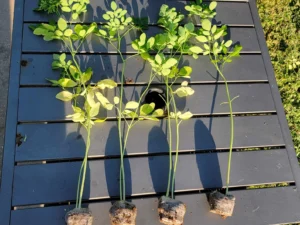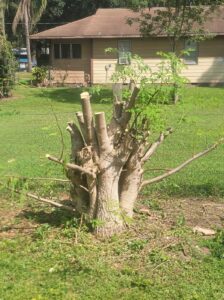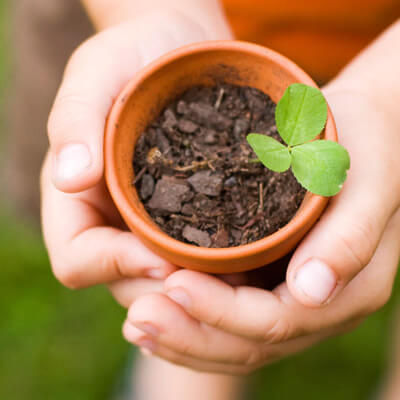Will Moringa Leaves Grow Back?
Moringa leaves have gained significant popularity in recent years due to their remarkable health benefits and versatility in culinary applications. This versatile plant, known as the “Miracle Tree,” has been celebrated for its ability to thrive in challenging environments and provide essential nutrients to those who consume it. However, as more people discover the wonders of moringa leaves, a common question arises: Do moringa leaves grow back after harvesting? In this article, we will explore the regenerative nature of the moringa tree and uncover the factors that contribute to the regrowth of its leaves. So, if you’re curious about the resilience of this incredible plant and how you can sustainably harvest its leaves, read on to discover the secrets behind moringa leaf regeneration.
Factors Influencing Moringa Leaf Regrowth
When it comes to the regrowth of moringa leaves after harvesting, several crucial factors come into play. Understanding these factors can shed light on the conditions necessary for encouraging the regeneration of moringa leaves.
One of the key determinants is the regrowth process itself.
Moringa trees possess an inherent ability to rejuvenate and produce new leaves. After a branch or stem is pruned or leaves are harvested, the moringa tree redirects its energy towards regenerating foliage.
This natural response enables the tree to replenish its leaf canopy and continue its growth cycle.
Seasonality and tree health also play a significant role in moringa leaf regrowth. Moringa trees thrive in warm climates and are highly adaptive. However, the regrowth rate of moringa leaves may vary depending on the season. In favorable conditions, such as during the warmer months, moringa trees tend to exhibit more vigorous leaf regrowth. Adequate sunlight, proper watering, and well-drained soil contribute to the overall health of the tree, facilitating optimal regrowth.
Real-life experiences shared by farmers and gardeners provide valuable insights into the regenerative capabilities of moringa leaves. Many have witnessed firsthand how moringa trees bounce back after pruning or harvesting. They have observed new shoots and leaves emerging within a relatively short period, attesting to the resilience of the moringa tree.
While the moringa tree possesses the inherent ability to regenerate leaves, the specific techniques used in harvesting and pruning can also impact leaf regrowth. By employing proper techniques, such as selectively harvesting mature leaves or pruning branches strategically, we can support and enhance the regrowth process. This approach ensures that the moringa tree remains healthy and vibrant, continuously providing a fresh supply of nutrient-rich leaves.
It’s worth noting that alongside the natural regenerative capacity of the moringa tree, providing optimal conditions for growth is essential. Soil nutrition, organic fertilizers, and appropriate watering practices are vital factors that contribute to the overall health of the tree. When the moringa tree receives the necessary nutrients and moisture, it can direct its resources towards regenerating leaves more efficiently.
Understanding the Moringa Tree
| Attribute | Information |
|---|---|
| Common Name | Moringa plant, moringa tree, miracle tree, horseradish tree, drumstick tree, ben oil tree |
| Botanical Name | Moringa oleifera |
| Family | Moringaceae |
| Plant Type | Tree |
| Mature Size | 25-35 ft. tall, 15-25 ft. wide |
| Sun Exposure | Full |
| Soil Type | Loamy, sandy, well-drained |
| Soil pH | Neutral, acidic |
| Bloom Time | Spring |
| Flower Color | White |
| Hardiness Zones | 10-11 (USDA) |
| Native Area | Asia |
To comprehend the regenerative nature of moringa leaves, it is essential to gain a deeper understanding of the moringa tree itself. The moringa tree, scientifically known as Moringa oleifera, has garnered attention worldwide for its exceptional characteristics and wide-ranging uses.
First and foremost, the moringa tree is hailed for its rapid growth rate and adaptability. Native to regions with tropical and subtropical climates, this hardy tree can thrive in diverse environments, including arid and nutrient-deficient soils. Its resilience allows it to withstand challenging conditions, making it an ideal choice for cultivation in various parts of the world.
One of the most remarkable features of the moringa tree is its ability to flourish quickly, even under unfavorable circumstances. Within a short span, a moringa seed can sprout and develop into a sizable tree, often reaching heights of up to 30 feet (9 meters) within a year.
Such rapid growth contributes to the tree’s capacity for continuous leaf production and regrowth.
Beyond its remarkable growth rate, the moringa tree offers a multitude of benefits. The leaves of the moringa tree are highly nutritious, rich in essential vitamins, minerals, and antioxidants. These leaves are packed with nutrients such as vitamin C, vitamin A, calcium, iron, and potassium, making them a valuable addition to a balanced diet.
Moreover, the moringa tree boasts various practical uses. Its leaves can be consumed fresh, cooked, or dried to create nutritious teas or powder for dietary supplements. Additionally, moringa leaves can be incorporated into a wide range of culinary preparations, adding a unique flavor and nutrient boost to dishes.
Furthermore, the moringa tree provides additional resources beyond its leaves. Its seeds are a source of high-quality oil, which is used in cooking, cosmetic products, and traditional medicine. The tree’s flowers are also edible and offer their own set of nutritional benefits.
Given the remarkable attributes and adaptability of the moringa tree, it comes as no surprise that its leaves have the capacity to regrow after harvesting. This natural resilience and continuous growth cycle make the moringa tree a valuable asset for individuals seeking a sustainable and nutrient-rich food source.
Harvesting Moringa Leaves
When it comes to enjoying the abundance of moringa leaves, understanding the proper techniques for harvesting is crucial. By following sustainable practices, we can ensure the regrowth and continuous supply of this nutritious green treasure.
Harvesting moringa leaves requires a delicate approach. The goal is to selectively harvest mature leaves while leaving behind enough young leaves to facilitate regrowth. As a general rule, it is recommended to wait until the moringa tree is at least six to eight feet (1.8 to 2.4 meters) tall before initiating the harvesting process. This ensures that the tree has established a sufficient root system and can sustain leaf regrowth without compromising its overall health.
When harvesting moringa leaves, it is important to utilize the right tools. Pruning shears or sharp scissors are typically recommended, as they allow for precise and clean cuts. Care should be taken to avoid damaging the branches or stems during the harvesting process, as this can hinder the tree’s regenerative abilities.
Sustainable harvesting practices involve selectively harvesting the mature leaves from different parts of the tree. This approach promotes an even distribution of leaf removal and encourages balanced growth. By avoiding excessive stripping of leaves from a single area, we allow the tree to maintain its structural integrity and promote optimal regrowth.
Additionally, periodic pruning of the moringa tree can benefit both the plant and leaf regrowth. Pruning involves the removal of unwanted or damaged branches, which stimulates the growth of new shoots and leaves. By trimming the tree strategically, we can shape its overall structure and enhance its regenerative capacity.
It is worth noting that moringa leaves can be harvested multiple times throughout the year, depending on the climate and growing conditions. In warmer regions, moringa trees tend to have longer growing seasons, allowing for more frequent harvests. However, in cooler climates, the growth cycle may slow down, resulting in fewer harvest opportunities.
Adopting sustainable harvesting practices not only ensures a steady supply of moringa leaves but also contributes to the long-term health and productivity of the tree. By maintaining a balance between leaf removal and regrowth, we can enjoy the nutritional benefits of moringa while preserving the tree’s vitality.
In conclusion, understanding the proper techniques for harvesting moringa leaves is essential for promoting their regrowth. By selectively harvesting mature leaves, utilizing the right tools, and practicing periodic pruning, we can support the continuous production of fresh and nutrient-rich moringa leaves. Embracing sustainable harvesting practices not only benefits us but also fosters the well-being of the moringa tree, allowing it to thrive and provide us with its remarkable gifts for years to come.

Regeneration of Moringa Leaves
Witnessing the regrowth of moringa leaves is a testament to the remarkable resilience of this extraordinary tree. Understanding the regenerative process and the factors that influence it can provide valuable insights into how moringa leaves grow back after harvesting.
After moringa leaves are harvested or branches are pruned, the moringa tree initiates a regrowth process to replenish its leaf canopy. This regenerative ability is inherent to the tree’s biology and allows it to sustain itself over time. By redirecting its resources and energy, the moringa tree focuses on producing new leaves, ensuring the continuity of its growth cycle.
Several factors contribute to the regrowth of moringa leaves. Firstly, pruning techniques play a vital role. By employing proper pruning practices, we can stimulate the tree to develop new shoots and leaves more efficiently. Strategic pruning removes unwanted or damaged branches, directing the tree’s energy towards regenerating healthy foliage.
The health of the moringa tree itself is another key factor in leaf regeneration. A well-nourished and properly cared-for tree has a greater capacity for regrowth. Adequate soil nutrition, regular watering, and appropriate sunlight exposure all contribute to the overall health of the tree, providing the necessary foundation for leaf regrowth. By ensuring these conditions are met, we can support the moringa tree in its regenerative endeavors.
Additionally, climate conditions significantly impact the rate of moringa leaf regrowth. Moringa trees thrive in warm and tropical climates, which provide optimal conditions for growth and regrowth. During the warmer months, moringa trees tend to exhibit more vigorous regenerative activity, capitalizing on the favorable climate.
However, even in regions with cooler or fluctuating climates, moringa trees can still regrow leaves, albeit at a potentially slower pace.
Real-life experiences shared by farmers and gardeners provide inspiring accounts of moringa leaf regrowth. Many have observed the resilience of the moringa tree as it rebounds after harvesting or pruning. In a relatively short period, fresh shoots emerge, unfurling vibrant green leaves that signify the tree’s ability to regenerate and sustain its leaf canopy.
Best Practices for Encouraging Moringa Leaf Regrowth

To ensure the continuous regrowth of moringa leaves and maintain a sustainable supply, it is essential to follow best practices that support the health and vitality of the moringa tree.
By implementing these practices, we can optimize the conditions for leaf regeneration and enjoy a thriving moringa tree.
- Soil Nutrition: Providing the moringa tree with a well-balanced and nutrient-rich soil is crucial for encouraging leaf regrowth. Organic fertilizers and compost can be applied to enhance the soil’s fertility and provide essential nutrients. Regular soil testing can help determine any deficiencies and guide the appropriate use of fertilizers, promoting healthy leaf development.
- Proper Watering: Adequate watering is essential for the moringa tree’s growth and leaf regrowth. While moringa trees are known for their drought tolerance, consistent and controlled watering is necessary, especially during dry periods. Deep watering allows the roots to access moisture at lower soil levels, promoting robust regrowth of leaves.
- Pruning Techniques: Employing proper pruning techniques is not only beneficial for shaping the tree’s structure but also stimulates leaf regrowth. Removing damaged or unwanted branches allows the moringa tree to redirect its resources towards producing new shoots and leaves. Prune selectively and strategically, focusing on maintaining a healthy balance between leaf removal and regrowth.
- Protection from Extreme Conditions: Moringa trees are generally resilient, but they can be susceptible to extreme weather conditions. Providing shelter or windbreaks can help protect the tree from strong winds, which can damage leaves and impede regrowth. Additionally, in areas with colder climates, providing appropriate protection during frost or freeze events can safeguard the tree’s health and leaf production.
- Regular Maintenance and Care: Consistent care and maintenance are essential for ensuring a healthy moringa tree and encouraging leaf regrowth. This includes regular inspections for pests and diseases, prompt treatment of any issues, and removing any weeds or competing vegetation around the tree. By maintaining a clean and well-maintained environment, we create optimal conditions for the moringa tree to focus on leaf regeneration.
- Observing Seasonal Changes: Being attuned to the seasonal changes and growth patterns of the moringa tree can help optimize leaf regrowth. Recognizing the optimal periods for harvesting and allowing for rest periods during less favorable seasons can support the regenerative capabilities of the tree. Adjusting pruning and harvesting practices accordingly allows the tree to regenerate leaves effectively.
By adopting these best practices, we can create an environment that fosters the regrowth of moringa leaves.
Nurturing a healthy and vibrant moringa tree ensures a sustainable supply of fresh and nutrient-rich leaves. Enabling us to continue enjoying the benefits of this remarkable plant. With proper care and attention, we can maximize the regenerative potential of the moringa tree and create a thriving ecosystem in our own backyard.

In summary
The regrowth of moringa leaves is a natural process driven by the resilience of the moringa tree. By understanding the factors that influence leaf regeneration and adopting best practices, we can cultivate a thriving moringa tree that consistently provides us with nutrient-rich leaves. Responsible pruning, proper care, favorable climate conditions, and sustainable harvesting practices all contribute to the continuous regrowth of moringa leaves. Embracing the remarkable qualities of the moringa tree and creating an optimal environment for its growth allows us to enjoy the nourishing benefits of these leaves. By respecting and nurturing the moringa tree, we can sustain a bountiful supply of fresh moringa leaves while supporting our own well-being and that of the surrounding ecosystem. Let us embark on this journey of cultivation. Embracing the regenerative nature of moringa leaves, and reaping the rewards of their nutritional abundance.
Reference
How To Prune Moringa Trees
How To Prune Moringa Trees (moringamatters.com)
Moringa With Barry stores offer a variety of moringa products. These include: Moringa Powder, Moringa Tea, Moringa Capsules and Moringa Oil.
Read more:
Edible Delights: Exploring the World of Moringa Flowers
Moringa Alfredo: A Nutritious Twist on a Classic Pasta Dish
Indulge in Moringa Brownies: A Healthy and Delicious Treat
Moringa Chili: Adding a Nutrient Boost to Your Favorite Comfort Food
Flavorful and Nourishing: Moringa Coconut Curry Recipe

